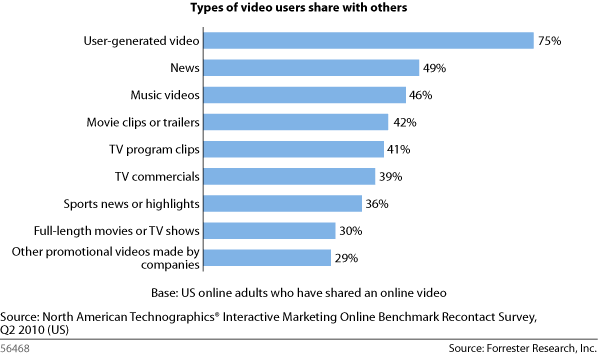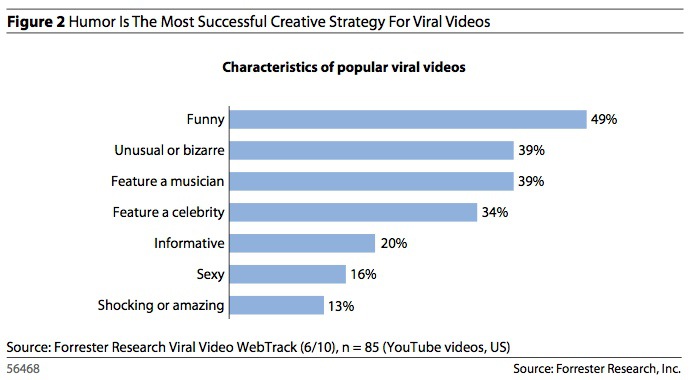Many companies want to reap the profits of viral video marketing. Unfortunately very few companies do the research to understand exactly what consumers are looking for in videos online. As a result, companies often invest in videos without receiving much of a profit in return. With some basic understanding though, this situation can be remedied.

85% of internet users in the United States view videos online according to a study conducted by Forrester Research. The study also discovered that relatively little of that viewing or sharing is of promotional content. 75% of the video content shared online is of User-Generated Content (UGC). Most of the remaining content is related to traditional media, i.e. music videos and film trailers. Less than 40% of internet users share commercial content from television. Even fewer share videos made specifically for marketing on the internet – these are shared less often than any other video type, which works directly against marketers who are trying to create viral videos from scratch. 42% of marketers online are already making videos – but only 15% report any actual success.
What are some tips to marketers to create videos that are more likely to go viral?
- Use humor to its fullest extent. Almost 50% of viral videos feature humor and 70% of internet users who share content with others say they do so because the videos they share are amusing.
- Don’t make your video long. Internet audiences have notoriously short attention spans. It’s best to clock your video in under two minutes in duration – the average video in Forrester Research’s study was 1:42 minutes in length. Over a third of the videos were less than a minute.
- You don’t need celebrities. Celebrities cost you more but don’t necessarily pay off. Only about a third of really successful viral videos featured a celebrity.
- Sexy content isn’t necessarily best. Only 16% of successful viral videos in the study featured sexy content.
- Don’t try to mimic UGC. You might think that if you imitate the style of UGC videos are made in you’ll fare better but you’d be wrong. Users can recognize the difference. Don’t pretend to have a low budget when you really have a high one. 85% of successful viral videos by brands featured full production values.
- TV ads can go viral online. Even if your ad has already been played on television, it can still go viral on the internet. TV ads account for over half of viral marketing videos online.

Don’t be afraid of repetition. Since you’ve already budgeted your television ads, you may as well maximize their performance and profit by posting them online. It won’t cost you any more, and your TV ads may fare better than original online content. Consider hosting UCG competitions as well; since UCG videos do well, you may actually get more exposure through a fan-created video. This also has the added benefit of involving your audience through co-creation, which in itself is an excellent marketing strategy. Another thing you must never forget is to include your brand in your video! This may seem like a given, but you’d be surprised how many companies forget to actually incorporate their brand or product into their otherwise successful viral videos (55% of videos lacked a clear reference to a brand or product!).
Lastly, be prepared to make a number of attempts before reaching success. Viral video marketing is hard; it is an uphill battle and you will almost certainly fail a number of times before you do finally make it. You shouldn’t give up though! Viral videos can be an amazing platform for word of mouth marketing and well worth the effort.
Check out the SEO Tools guide at Search Engine Journal.




